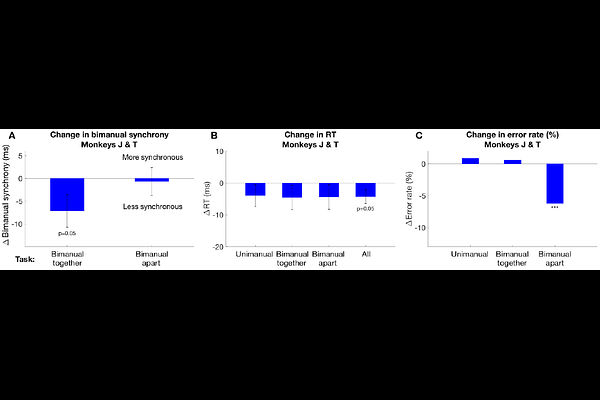A causal role for the posterior corpus callosum in bimanual coordination

A causal role for the posterior corpus callosum in bimanual coordination
Kang, J. U.; Snyder, L. H.; Mooshagian, E.
AbstractInter-areal communication is crucial for brain function. Given the largely contralateral organization of the brain, bimanual coordination likely involves interactions across the two cerebral hemispheres for motor planning and execution. The parietal reach region (PRR) is an early node in the sensorimotor transformation stream. Here we examine the contributions of direct callosal connections between left and right PRR to bimanual coordination. Using manganese-enhanced magnetic resonance imaging, we traced callosal pathways crossing the midline and found that PRR-PRR connections are restricted to the splenium. We then temporarily blocked these fibers with lidocaine while measuring behavioral performance and interhemispheric coherence. Blockade reduced task-specific PRR-PRR coherence during bimanual movements. Behaviorally, blockade sped movement initiation across tasks, consistent with an inhibitory role of interhemispheric communication, reduced the temporal synchrony of bimanual movements to a common target and reduced errors for bimanual movements to separate targets. These findings provide causal evidence that posterior callosal communication supports spatial coordination of bimanual actions but may also constrain independent limb control.